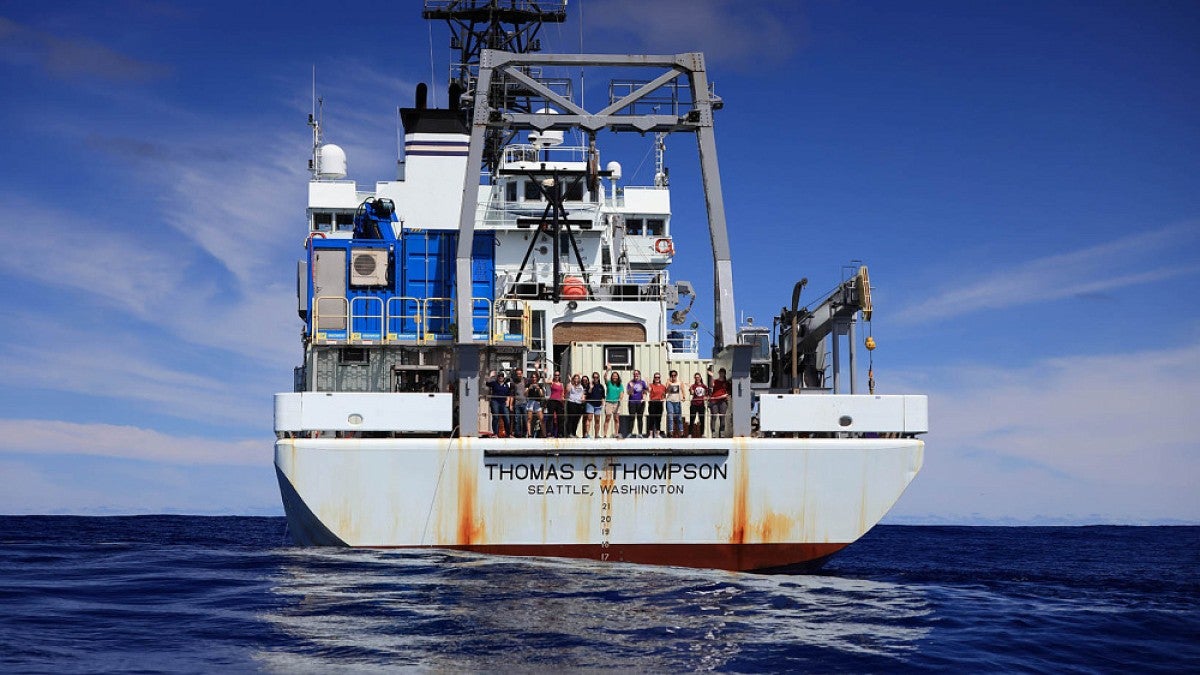More than a mile beneath the surface of the ocean lie some of the most expansive and least studied habitats on earth.
The abyssal sea floor is cold and dark, but it’s far from dead. It’s teeming with a tremendous diversity of life, including microscopic larval invertebrates that are essential to food webs, nutrient cycling and the replenishment of life throughout the world ocean.
A new IMAX film spearheaded by researchers at the UO’s Oregon Institute of Marine Biology will shine a light on the importance of this unique ecosystem and the larval forms that maintain it. The film, tentatively titled “Born in the Abyss,” will be funded by a $3 million National Science Foundation grant.
It will include footage gathered with the newly upgraded Alvin submersible and the Jason remotely operated vehicle, the two most famous undersea vehicles in the U.S. oceanographic fleet.
The film will also put a special focus on women in science, technology, engineering and math, known as the STEM subjects. It will prominently feature female undergraduate students, some from underrepresented groups, at the UO and collaborating institutions.
“It’s designed to inspire kids to think, ‘If they can do it, we can do it too,’” said Craig Young, director of the marine biology institute and the lead researcher on the grant.
Young’s team is partnering with the Oregon Museum of Science and Industry and numerous other museums around the country to develop interactive content that complements the film. Virtual reality and augmented reality exhibits will let visitors pretend they’re piloting their own submarine and hunting for microscopic larvae in the deep sea.
“It’ll take a giant film experience and pull it into the whole museum,” Young said.
The film will be produced in a UO collaboration with Stephen Low Productions in Montreal, Canada, a company that pioneered large-format films about science and technology. Their past films about the deep sea include “Titanic” and “Volcanoes of the Deep Sea.” More recently, they released the award- winning film “Secrets of the Universe,” featuring the Large Hadron Collider in Switzerland.
George von Dassow and Trish Mace, also at the UO institute, are co-investigators on the grant. Other collaborators include scientists at North Carolina State University, Western Washington University, University of Rhode Island and Woods Hole Oceanographic Institution.
Final filming will take place this fall, during a research expedition to methane seeps in the Gulf of Mexico and up the Atlantic seaboard. The film will also feature underwater footage from recent expeditions to hydrothermal vents off Tonga and Panama. The film is expected to premiere in museum IMAX theaters in early 2024.
—By Laurel Hamers, University Communications


